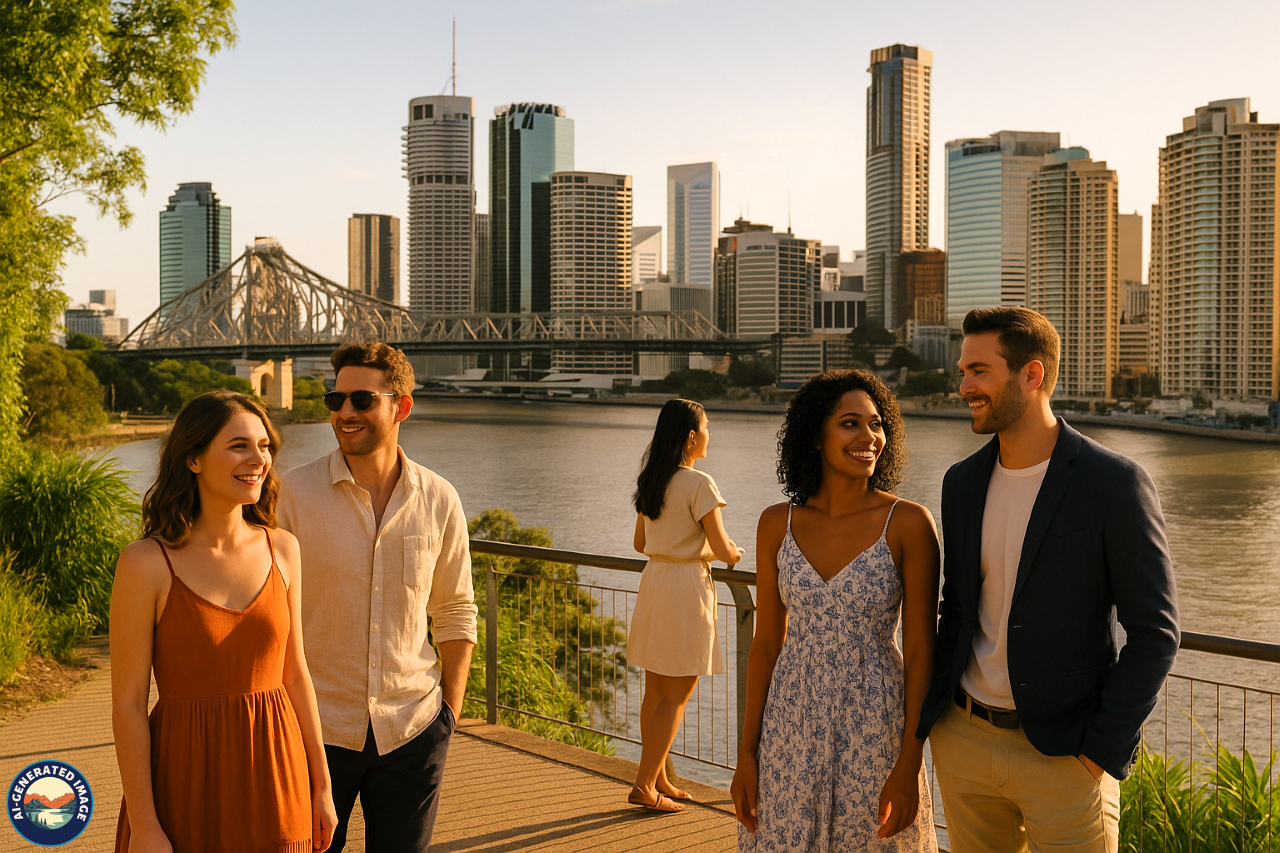Introduction
Situated along the winding Brisbane River in Queensland, Brisbane is a dynamic city that seamlessly blends cosmopolitan sophistication with natural charm. Though it may not share the spotlight with Sydney or Melbourne, Brisbane stands tall with its sunny weather, eclectic neighborhoods, and welcoming atmosphere.
Whether you’re a solo adventurer, a couple seeking romance, or a family eager to explore, Brisbane offers something for everyone. With iconic attractions, a thriving culinary scene, and easy access to islands and rainforests, this city is both a destination and a gateway to the wonders of Queensland.
This comprehensive guide will take you through Brisbane’s history, attractions, hidden gems, and practical tips to help you make the most of your visit.
History and Culture
Before the skyline of skyscrapers and modern bridges took shape, the area now known as Brisbane was home to the Turrbal and Yugara peoples. These Indigenous communities lived sustainably, drawing spiritual and cultural significance from the river and the surrounding land.
The city’s European history began in the 1820s as a penal settlement. Over time, it transformed into a thriving urban center and was officially named the capital of Queensland in 1859. Despite its evolution, Brisbane retains a laid-back spirit that sets it apart from other major Australian cities.
Culturally, Brisbane is a rich tapestry of influences. From First Nations art and storytelling to global festivals, public murals, and world-class galleries, the city reflects both its deep-rooted heritage and forward-looking creativity.
Best Time to Visit
Brisbane’s subtropical climate makes it a pleasant destination year-round, but each season offers a unique experience:
-
Spring (September–November):
-
Jacaranda trees bloom throughout the city, and temperatures are ideal for outdoor festivals and walks.
-
Summer (December–February):
-
Expect high heat and humidity, perfect for beach outings. Afternoon thunderstorms are frequent.
-
Autumn (March–May):
-
With cooler, drier days, this season is perfect for exploring parks and surrounding attractions.
-
Winter (June–August):
-
Brisbane enjoys mild, sunny winters, making it a popular escape from colder regions.
For fewer crowds and better deals, consider visiting during shoulder seasons or outside Australian school holidays.
Top Tourist Attractions
South Bank Parklands
This lush riverside precinct is the city’s cultural and recreational heart. South Bank features tropical gardens, riverside cafés, and Streets Beach—Australia’s only inner-city man-made beach. Visitors can also explore the Queensland Art Gallery, the State Library, and weekend markets.
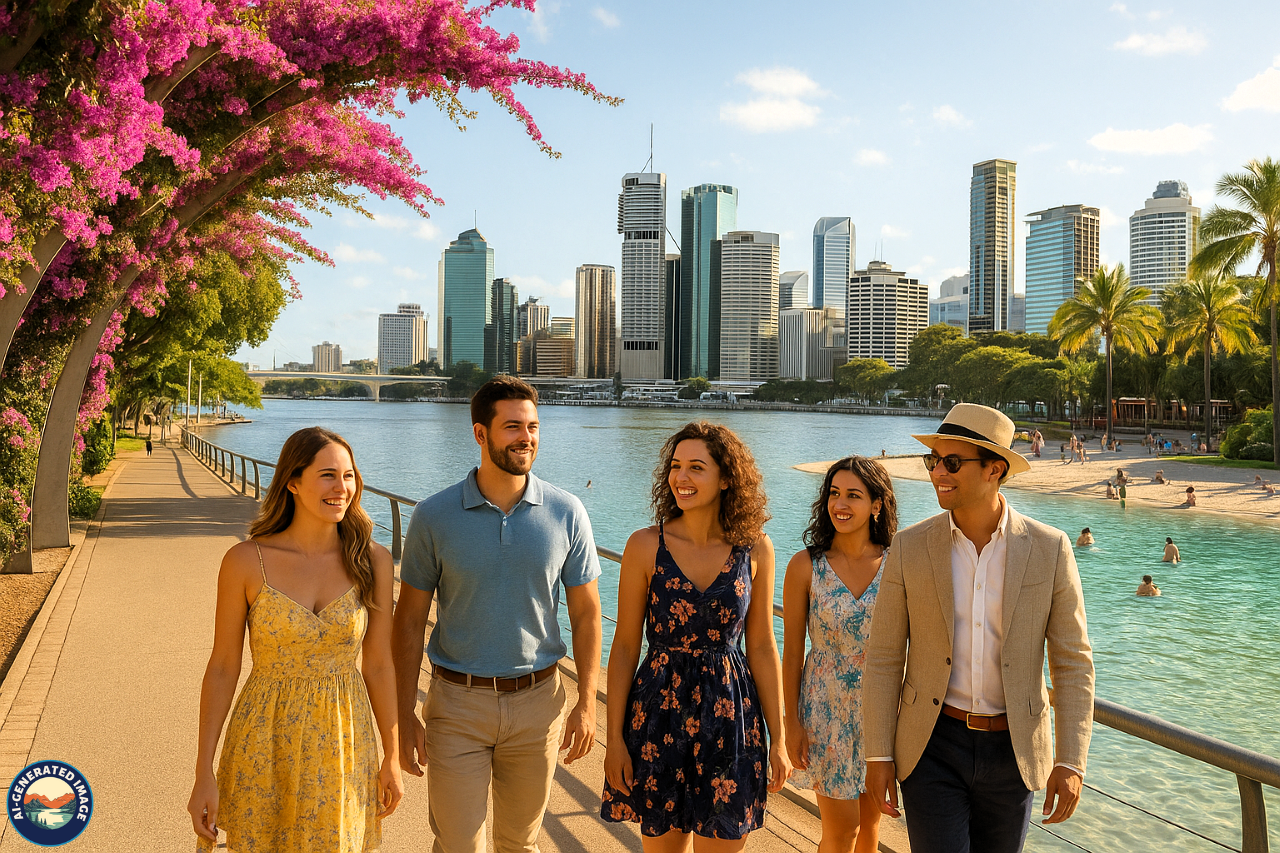
Story Bridge Adventure Climb
One of the city’s most iconic landmarks, the Story Bridge offers a thrilling adventure climb with panoramic views of the river, skyline, and distant mountains. Whether you choose a dawn or twilight climb, the experience is unforgettable.
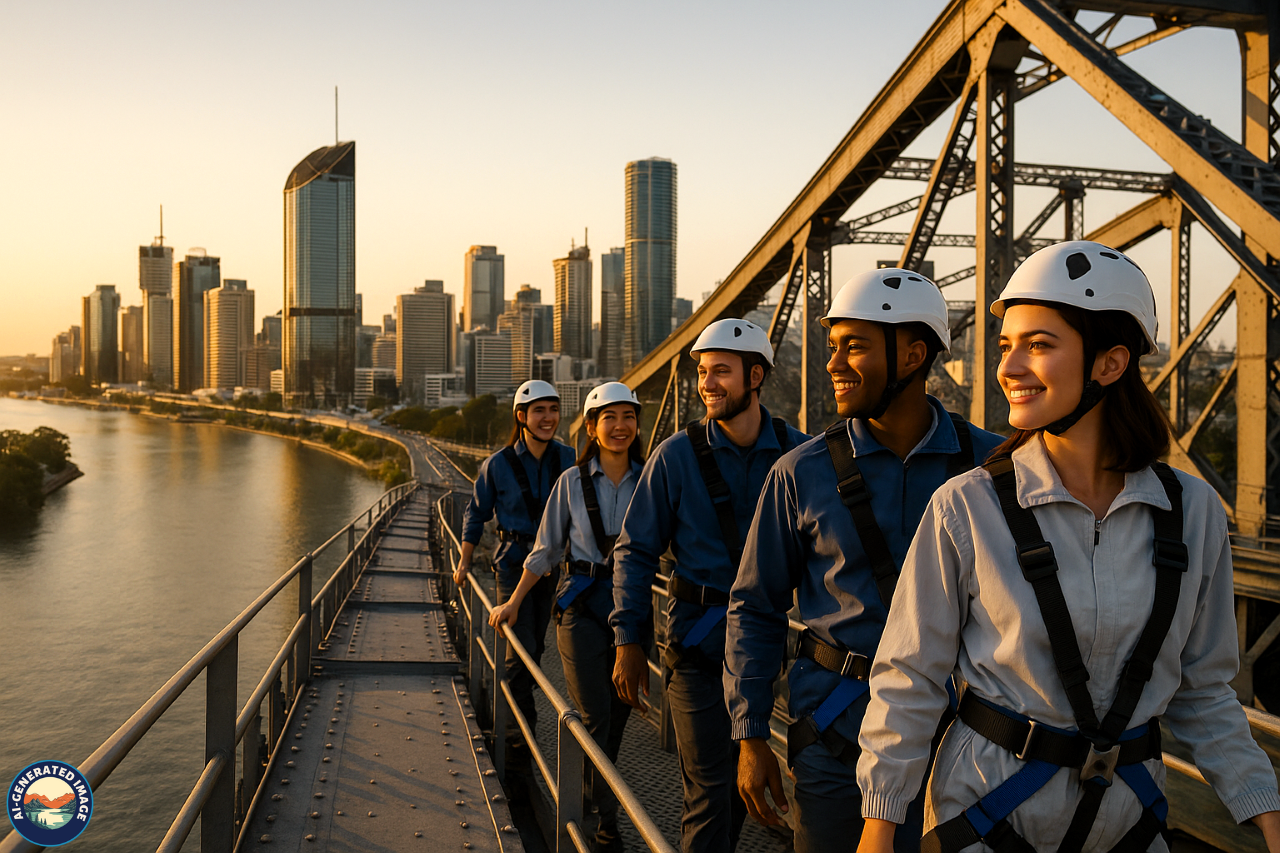
Brisbane City Botanic Gardens
Located at the CBD’s edge, these historic gardens are home to rare plant species, winding paths, and riverside picnic areas. It’s an ideal spot for a peaceful break in the middle of the bustling city.
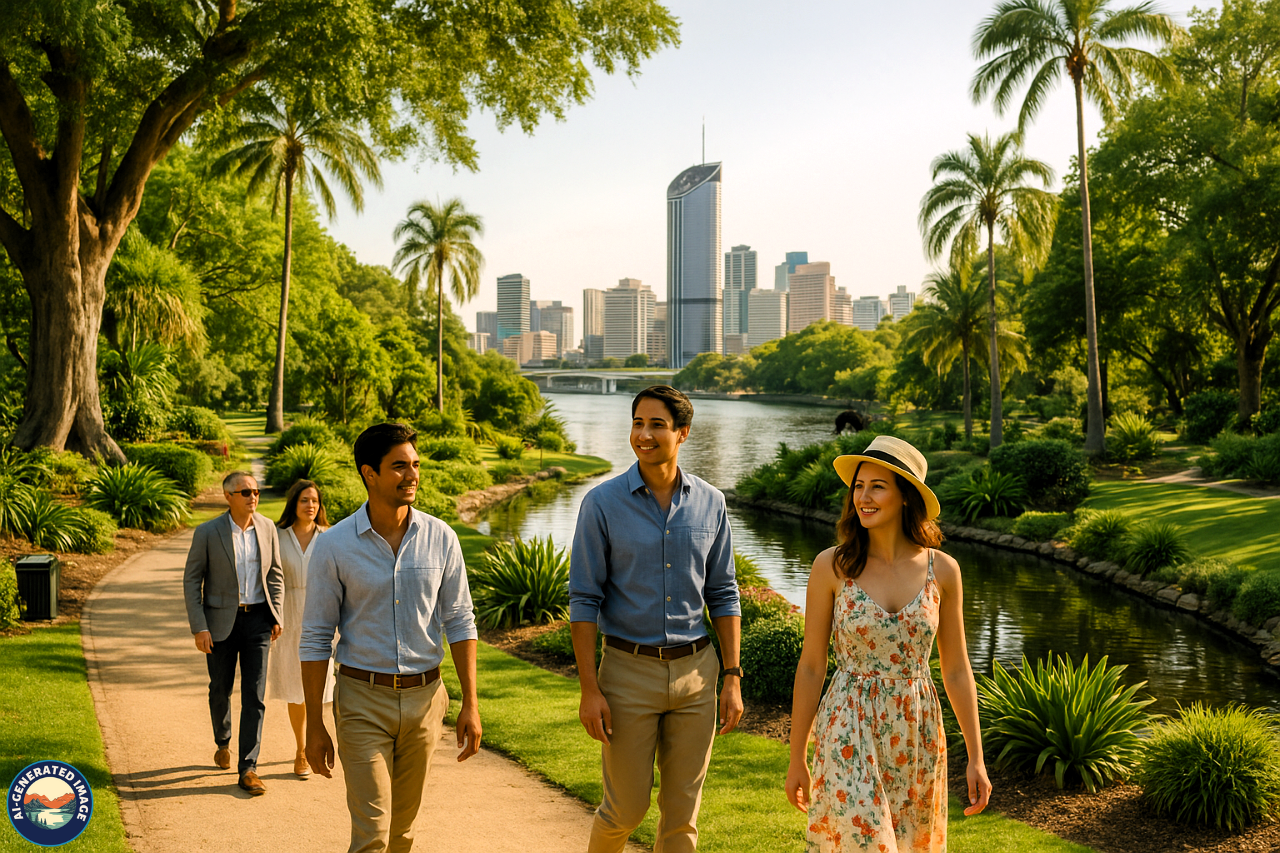
Lone Pine Koala Sanctuary
As the world’s oldest and largest koala sanctuary, Lone Pine offers an incredible opportunity to cuddle koalas, feed kangaroos, and interact with other native Australian animals. It’s both educational and family-friendly.
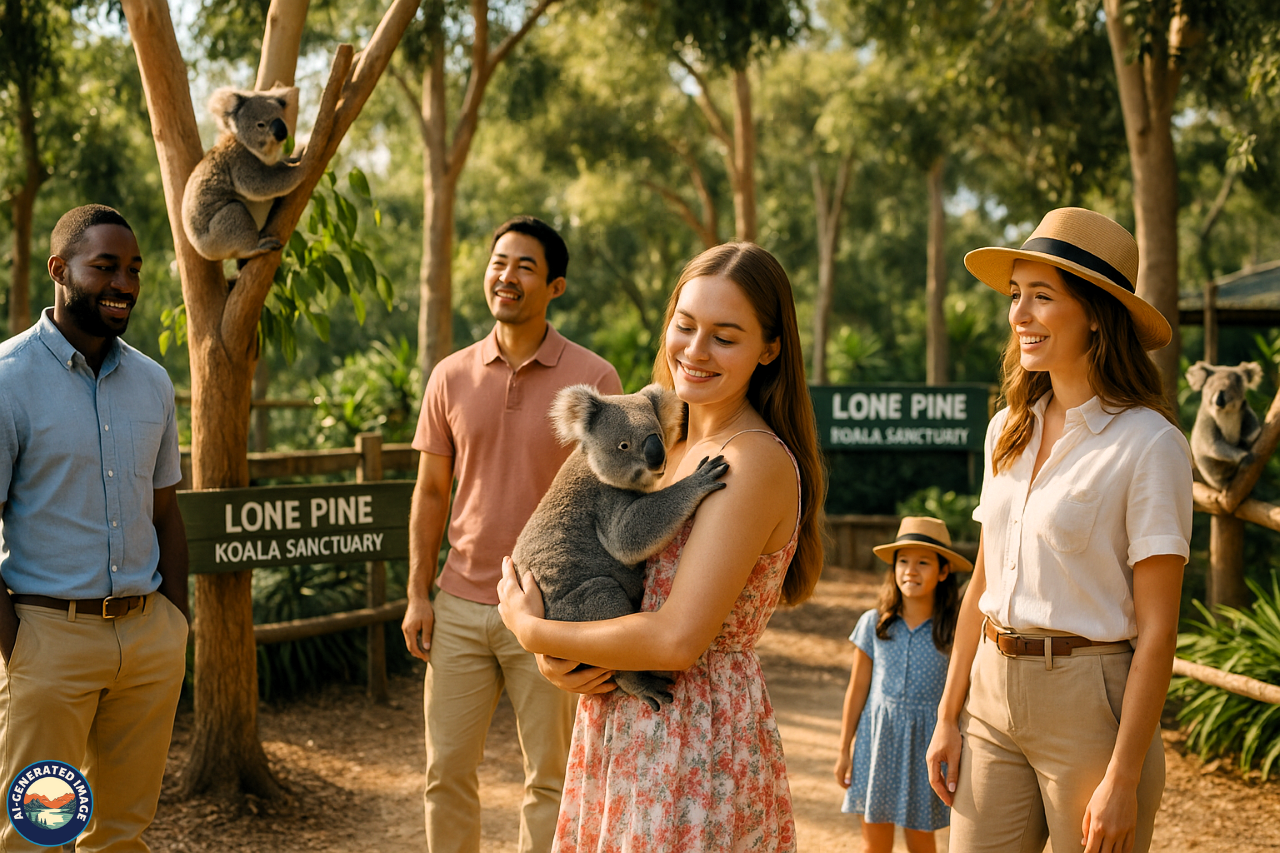
Mount Coot-tha Lookout
Just a short drive from the city, Mount Coot-tha provides sweeping views of Brisbane and its surroundings. The area also includes the Brisbane Botanic Gardens, Mt Coot-tha, offering themed gardens and a planetarium.
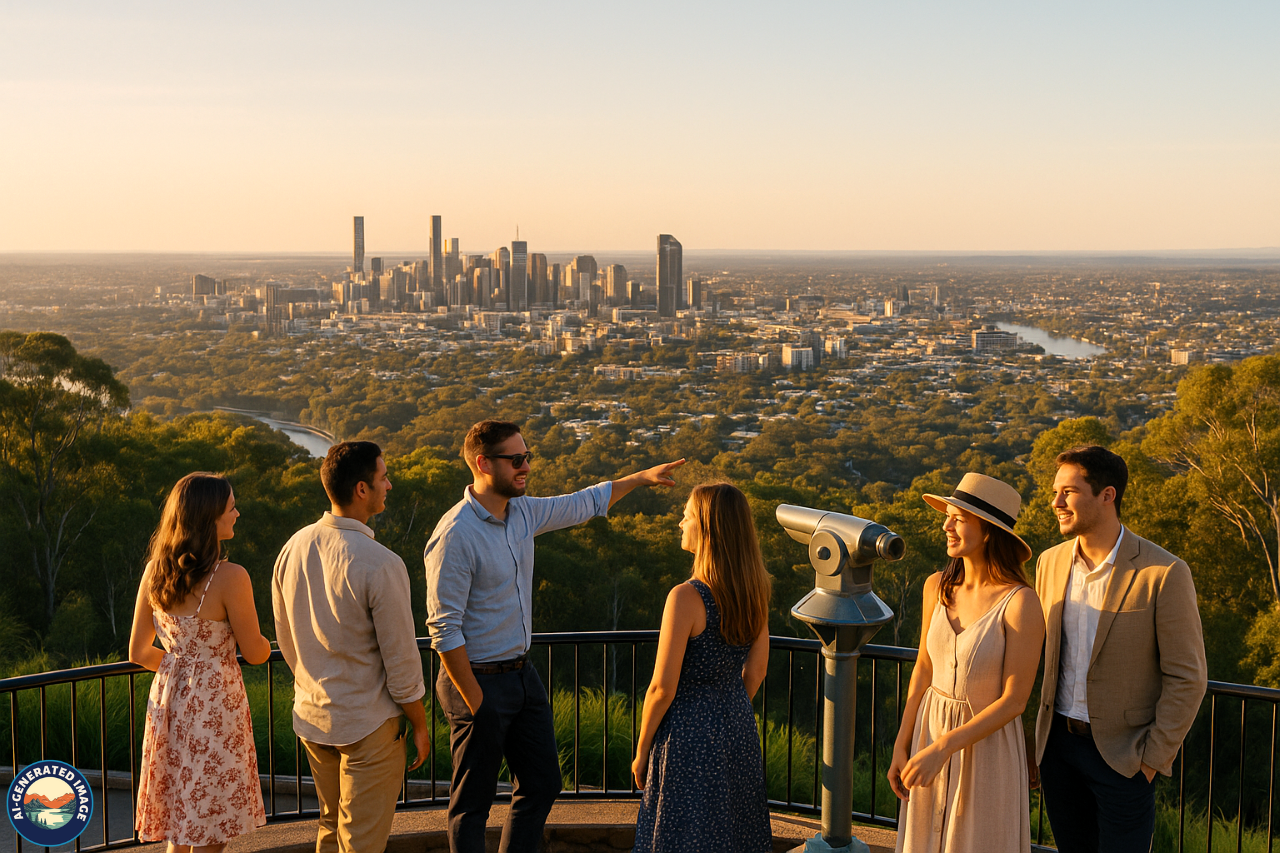
Must-Do Experiences
Cruise Along the Brisbane River
Brisbane’s river is the lifeblood of the city, and exploring it by boat is a must. Hop on a CityCat ferry for a scenic, budget-friendly ride past key landmarks. Alternatively, take a kayak tour or book a dinner cruise for a unique evening experience.
Explore Fortitude Valley
Known for its edgy vibe, The Valley is Brisbane’s go-to district for nightlife, live music, and creative culture. Discover trendy bars, vintage shops, and delicious international cuisine in its bustling streets and laneways.
Catch a Match at Suncorp Stadium
Home to rugby, soccer, and major concerts, Suncorp Stadium is the place to soak up local sports enthusiasm. Even if you’re not a fan, the stadium’s energy and atmosphere are electric during events.
Visit the Gallery of Modern Art (GOMA)
As part of the South Bank cultural precinct, GOMA showcases cutting-edge exhibitions from both Australian and international artists. Interactive displays and free entry make it a great destination for all ages.
Markets and Street Eats
Explore Brisbane’s vibrant food scene at places like:
-
Eat Street Northshore:
-
A collection of colorful container stalls offering global street food, live music, and river views.
-
Jan Powers Markets:
-
Held across various suburbs, these markets offer fresh produce, gourmet bites, and artisan goods.
Day Trips and Excursions from Brisbane
Moreton Island
A 75-minute ferry ride brings you to Moreton Island, a haven of natural beauty. Go snorkeling among shipwrecks, try sandboarding down massive dunes, or hand-feed wild dolphins at Tangalooma Resort.
North Stradbroke Island
Known as “Straddie,” this island is perfect for whale watching (in season), surfing, or simply relaxing. Visit freshwater lakes, scenic lookouts, and learn about Aboriginal culture during your visit.
Tamborine Mountain
This peaceful hinterland destination offers rainforests, art galleries, wine tastings, and glow-worm caves. The Skywalk offers elevated views of the forest canopy and is ideal for nature lovers.
Australia Zoo
Founded by the late Steve Irwin, Australia Zoo is both an animal sanctuary and a conservation hub. Located about an hour north of Brisbane, it’s a top destination for families and wildlife enthusiasts.
Where to Stay
Brisbane offers a variety of accommodation options to suit every travel style:
-
Budget-Friendly:
-
Hostels and affordable hotels are available in the CBD and West End.
-
Mid-Range:
-
South Bank and Spring Hill offer comfortable, well-located hotels and serviced apartments.
-
Luxury:
-
Five-star hotels with river views and rooftop pools can be found in the CBD and along the riverside.
Best Neighborhoods:
-
South Bank:
-
Close to major attractions and family-friendly.
-
Fortitude Valley:
-
Perfect for nightlife and shopping.
-
New Farm:
-
Stylish and relaxed, great for riverside strolls.
-
West End:
-
Eclectic, artsy, and full of local flavor.
Where to Eat and Drink
Brisbane’s food scene is fresh, diverse, and increasingly acclaimed.
-
Local Specialties:
-
Sample fresh seafood such as barramundi and Moreton Bay bugs. Finish with pavlova or lamingtons.
-
Fine Dining:
-
Try acclaimed restaurants like Agnes, Gerard’s Bistro, and Otto.
-
Street Food:
-
Grab tasty bites at Eat Street Northshore or Boundary Street Markets.
-
Bars and Breweries:
-
Enjoy sunset views from Iris Rooftop Bar or sip craft brews at Felons Brewing Co under the Story Bridge.
-
Cafés:
-
Brisbane’s café culture is thriving. Head to Bellissimo, Fonzie Abbott, or Blackstar Coffee for expertly brewed coffee.
How to Get Around Brisbane
Navigating Brisbane is simple and efficient:
-
Public Transport:
-
Use TransLink’s buses, trains, and ferries. A Go Card offers easy, discounted travel.
-
CityCat Ferries:
-
A scenic way to explore the riverfront and key suburbs.
-
CityHopper (Free Ferry):
-
Perfect for short trips between inner-city stops.
-
Cycling & E-Scooters:
-
Bike lanes and shared scooters make it easy to get around downtown.
-
Walking:
-
The CBD, South Bank, and Fortitude Valley are pedestrian-friendly.
-
Rideshare Services:
-
Uber, DiDi, and Ola are widely available.
Travel Tips
-
Safety:
-
Brisbane is considered safe. Standard precautions are sufficient.
-
Sun Protection:
-
Always wear sunscreen, even on overcast days.
-
Local Etiquette:
-
Australians are informal and friendly. Politeness and a relaxed attitude go a long way.
-
Budget Tips:
-
Enjoy free attractions like museums, CityHopper ferries, and public parks.
-
Packing Guide:
-
For summer: Light clothing, a hat, and sandals.
-
For winter: A light jacket and layers.
-
Year-round: Comfortable walking shoes and sun protection.
-
Conclusion
Brisbane is more than just a stopover on your way to the Great Barrier Reef or the Gold Coast. It’s a vibrant, livable city that embraces both urban energy and natural serenity. Whether you’re marveling at modern art, hiking forested trails, or enjoying world-class cuisine, the city delivers with charm and authenticity.
With friendly locals, diverse experiences, and easy access to some of Australia’s best landscapes, Brisbane is a destination that rewards every kind of traveler. Come for the sunshine, stay for the stories—and leave with unforgettable memories.
FAQs
Why should I visit Brisbane over other Australian cities?
Brisbane offers a mix of vibrant culture, outdoor activities, and proximity to beaches and islands. It’s less hectic than Sydney and more relaxed than Melbourne.
What are the best free things to do in Brisbane?
Visit South Bank, enjoy free museums and galleries, take a CityHopper ferry, or walk the Mount Coot-tha trails.
How many days should I spend in Brisbane?
Three to four days allow you to explore major attractions and enjoy a nearby day trip.
Is it safe to swim in the Brisbane River?
Swimming is not recommended in the river itself, but South Bank offers a clean, safe, man-made lagoon.
Is Brisbane a good choice for family holidays?
Yes! The city has many family-friendly attractions, including wildlife parks, interactive museums, and child-friendly dining options.

